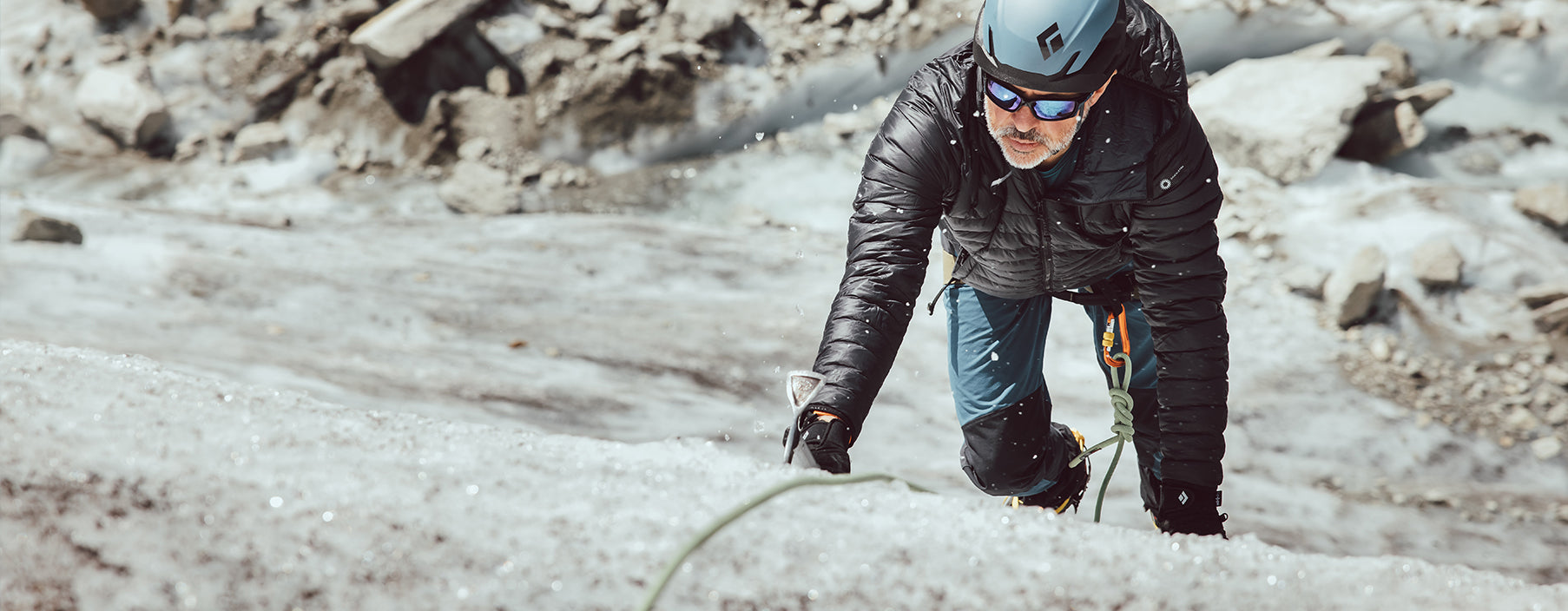
WHY CASHMERE? // A SHACKLETON GUIDE TO FIBRES
Written by Amelia Steele, Shackleton
When a chill nips the air and nights draw in you look forward to putting on your favourite chunky-knit sweater. A contemporary Shackleton sweater is endowed with the strength of the chunky knits worn on Sir Ernest’s expeditions, but they’re a far cry from history’s itchy woollens. Here at Shackleton we use a blend of fibres to ensure luxurious comfort complements this rugged strength. The superior softness of this season’s Shackleton sweaters comes from using wool blends which often include cashmere fibres.
What is Cashmere?
The cashmere fibre comes from goats which are found in the cold, dry, tough terrains of Central and East Asia. In fact, the terrain for which these goats are best adapted is so inhospitable that they are found in only 12 countries around the world. A large proportion of high-quality cashmere is grown in the territory sandwiched between India, Pakistan, and China where the world's highest peaks, such as Mount Everest (29,029 ft/8,848 m) and K2 (28,251 ft/8,611 m) stretch to the skies.

Cashmere refers not to a breed of goats but to the downy underfibre that all goats, except the single-coated Angoras, have evolved to produce as insulation against the brutal cold of winter and then shed in the summer.
Under the coarse, protective outer coat lies the soft cashmere underfleece which is gathered in spring when the goats naturally shed their winter coats using a process of combing. It takes a single goat one year to produce enough cashmere for a scarf.

Cashmere fibres are ultra-fine, longer, smoother and straighter than sheep's wool and are spun into a filament ready to be woven or knitted. The result is luxuriously soft.
The History of Cashmere
The earliest documented usage of cashmere dates back to the 14th century. The word cashmere comes from Kashmir, which originally referred to a high valley between two mountain ranges of the Himalayas on the Indian subcontinent, but today refers to the - politically disputed - territory between India, Pakistan, and China. The term was coined in the 16th Century and was used to describe the shawls spun by Kashmiri craftsmen on the Silk Route bound for India. By the late 18th century, cashmere shawls were being exported from Kashmir and India to the West, particularly to Britain and France. Cashmere first arrived in Paris and quickly became the most sought after and expensive status symbol of the time. Today Northern China produces about half to two-thirds of the world's cashmere. Mongolia, Tibet and Afghanistan have also been the sources of significant quantities of cashmere with additional bulk amounts coming from central Asia, Iran, Australia, and New Zealand.
Cashmere Properties
Cashmere fibre is ultra-fine, with a diameter of 15-19 microns (one sixteenth of the diameter of a human hair), which makes it very soft. In comparison most English wool, like that which would have been used to knit Shackleton’s expedition sweaters, is between 29 and 35 microns in diameter.
The cashmere fibre is cylindrical with a crimped texture which creates loft and a very soft finish, which may even display a touch of luster. It is one of the only hollow fibres in the world which makes it very light in weight and significantly warmer than sheep’s wool.
Sustainability
Overgrazing by cashmere goat herds in certain parts of the Mongolian and Chinese grasslands is causing soil erosion and degradation to the habitat. For that reason wherever possible we select post-consumer recycled cashmere as a more sustainable option. For example, in the Caird sweater the cashmere content of the yarn is made from post-consumer recycled cashmere fibre.
Shackleton Cashmere

| Caird Cashmere Sweater |
|
Knitted from 97% recycled cashmere and 3% merino yarn, the Caird Sweater is a soft yet rugged crew-neck favourite for autumn-winter-spring use. |
| Performance details include reinforced elbow patches and feature ribbing on the hem and sleeves. |
| Fully breathable and designed to be worn over a tee or collared shirt, the Caird offers a wide range of comfort. |



